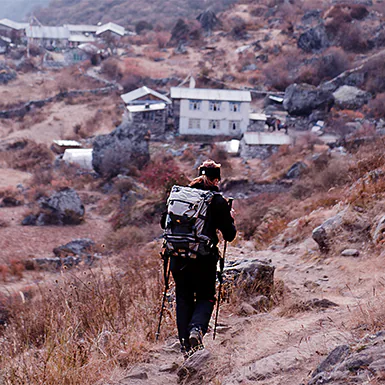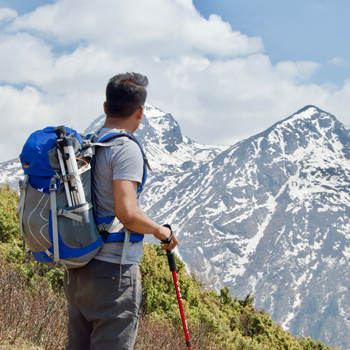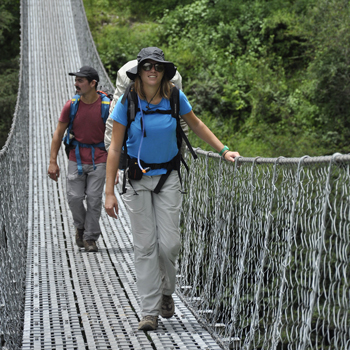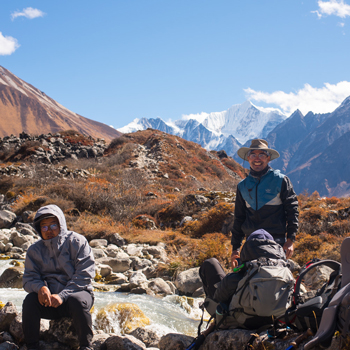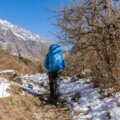Kyanjin Gompa Langtang is a peaceful Buddhist monastery at 3870 meters in the beautiful Langtang Valley of Nepal. This quiet venue is an everyday stopping place for trekkers in the Langtang area. The Gompa is sacred, and its visitors can view the Himalayan mountains from a rare angle for those on foot. Hence, it is a place adventurers with religious interests should go to.
However, Kyanjin Gompa Langtang is a sanctuary for the Buddhist community. It enables people to meditate and practice their faith without disruptions. In addition, it allows visitors to explore local cultures while adjusting to the altitude before continuing on deeper treks into the valley.
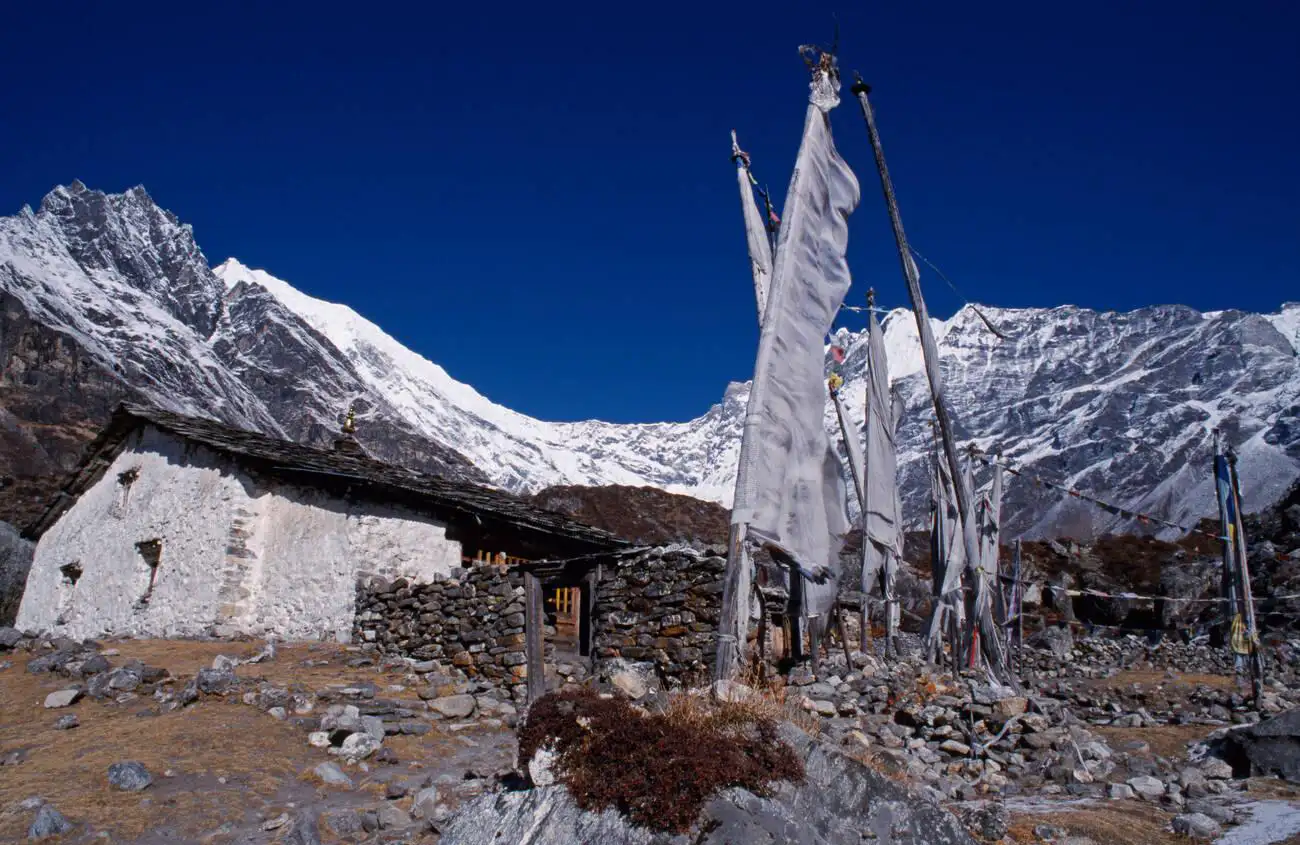
Historical Background of the Gompa and Its Spiritual Importance
- Ancient Foundations: Monks established Kyanjin Gompa centuries ago, bringing Tibetan Buddhist teachings to the Himalayas. Today, the Gompa is a spiritual haven for both monks and followers.
- Cultural Significance in the Local Community: The Tamang people, who have lived in the Langtang Valley for generations, consider Kyanjin Gompa an artistic and spiritual hub. The monastery plays a central role in maintaining the religious practices and traditions of the local community.
- Meditation Retreat: Kyanjin Gompa provides a calm, secluded space for meditation. Visitors and trekkers often participate in the meditation sessions at the Gompa, adding to its appeal as a spiritual retreat.
- Celebration of Festivals and Rituals: The monastery is a vibrant place during several Buddhist festivals held throughout the year. Pilgrims and locals gather at the Gompa to observe traditional rituals, strengthening their connection to their faith.
- Rebuilding After the Earthquake: Kyanjin Gompa sustained damage during the 2015 earthquake, but the community’s efforts successfully restored it. The rebuilt monastery now stands as a symbol of the resilience and spiritual dedication of the people of Langtang Valley.
Kyanjin Gompa Altitude: Essential Insights for Trekkers
Kyanjin Gompa Langtang sits at an impressive altitude of 3,870 meters (12,697 feet), providing a unique combination of spiritual serenity and natural splendor. This high elevation presents challenges but also offers rewarding experiences for trekkers exploring the Langtang Valley.
Altitude Challenges at Kyanjin Gompa
Altitude Sickness
At 3,870 meters, the air contains less oxygen, which may cause trekkers to experience altitude sickness. Common symptoms include headaches, dizziness, nausea, and shortness of breath. Avoiding severe health issues requires recognizing signs early.
Acclimatization Tips
- Gradual Ascent: To prevent altitude sickness, ascend slowly. Most trekking routes include stops at lower elevations like Langtang village to allow proper acclimatization.
- Stay Hydrated: Drinking plenty of water at high altitudes is essential. Adequate hydration helps the body adjust more quickly to the thinner air.
- Rest Days: It is vital to include rest days during the trek. Spending extra time at Kyanjin Gompa helps the body adapt to the altitude before moving to higher elevations.
Benefits of Kyanjin Gompa
- Breathtaking Views: The high altitude at Kyanjin Gompa offers spectacular views of the surrounding Himalayan peaks. Trekkers can enjoy stunning vistas of Langtang Lirung (7,227 meters), Yala Peak, and other snow-covered mountains. The elevation provides a perfect vantage point for those seeking panoramic views.
- Kyanjin Gompa Viewpoint: A short hike from the Gompa leads to the Kyanjin Gompa Viewpoint, which offers 360-degree views of the Langtang region. This higher elevation showcases the beauty of the Himalayan range and is an excellent spot for photography and peaceful reflection.
- Spiritual and Natural Tranquility: Kyanjin Gompa’s high altitude enhances its peaceful environment, making it ideal for meditation and spiritual reflection. The serene atmosphere and majestic natural surroundings add to the overall experience for visitors seeking both adventure and peace.
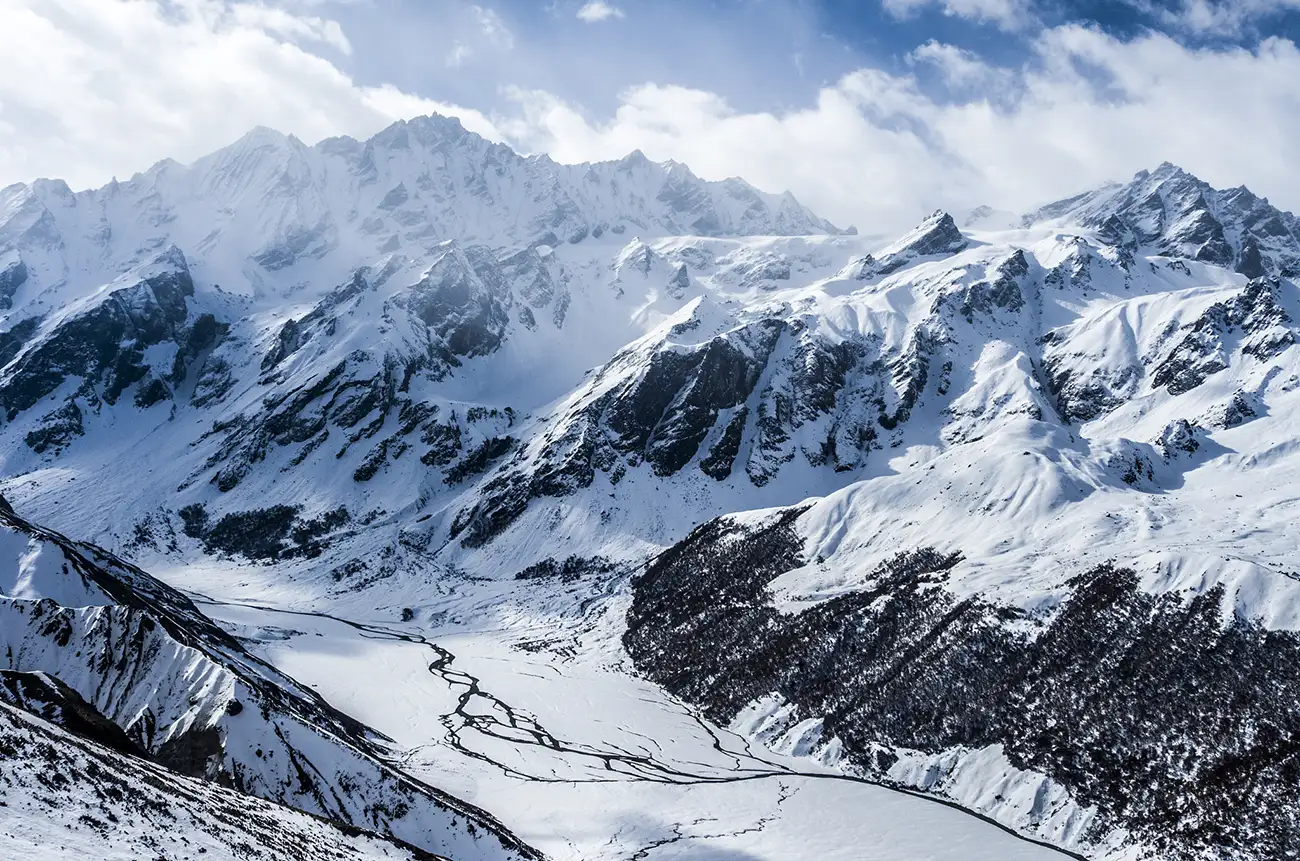
Discovering the Kyanjin Gompa Viewpoint: A Trekker’s Paradise
Situated in the heart of the Himalayas, the Kyanjin Gompa Viewpoint offers trekkers an unmatched chance to witness the grandeur of Langtang Lirung, Langshisha Ri, Yala Peak, and other towering peaks. Positioned near Kyanjin Gompa Langtang, this popular viewpoint draws visitors eager to experience the breathtaking beauty of the Himalayan landscape.
Panoramic Views from Kyanjin Gompa Viewpoint
The Kyanjin Gompa Viewpoint is renowned for its sweeping views of some of the tallest mountains. From this point, trekkers can admire the towering Langtang Lirung, which rises to an impressive 7,227 meters, along with the equally awe-inspiring Langshisha Ri and Yala Peak. These expansive vistas create the perfect setting for photography, allowing trekkers to capture the essence of the Langtang region.
Best Time to Visit the Kyanjin Gompa Viewpoint
- Morning Visit: The early morning offers the clearest skies and ideal lighting for photography. Watching the sunrise from this Viewpoint is a magical experience as the first light touches the snow-covered peaks, creating vibrant hues across the landscape.
- Golden Hour: Photographers will also appreciate the late afternoon when the golden light bathes the peaks, creating a warm and dramatic scene just before sunset. This time of day is ideal for capturing stunning photos of the Himalayan giants.
- Starting Point: The trek to the viewpoint begins at Kyanjin Gompa, 3,870 meters (12,697 feet). Before attempting to hike higher, trekkers must acclimatize to the Kyanjin Gompa Altitude.
Understanding Kyanjin Gompa Weather: A Trekker’s Essential Guide
The weather at Kyanjin Gompa Langtang significantly influences the trekking experience. The gompa is located at a high altitude of 3,870 meters so that the weather can change dramatically throughout the year. Knowing the weather patterns helps trekkers prepare for the conditions they may face during their visit.
Seasonal Weather at Kyanjin Gompa
- Spring (March to May): Spring offers one of the best seasons to visit Kyanjin Gompa. The weather is ideal for trekking, with daytime temperatures between 10°C and 15°C. Rhododendrons bloom, and the skies remain clear, offering trekkers incredible views of Langtang Lirung and the surrounding peaks. The dry weather ensures easy walking conditions and fantastic scenic beauty.
- Summer/Monsoon (June to August): During the summer, Kyanjin Gompa Weather shifts with the monsoon season. Heavy rain and thunderstorms dominate, with temperatures between 8°C and 16°C. Trails become slippery, and cloud cover can obstruct views. Landslides are common, making trekking more hazardous. Trekkers should avoid this season unless they are experienced with wet conditions and prepared with waterproof gear.
- Autumn (September to November): Autumn provides ideal trekking conditions, similar to spring. After the monsoon, the weather clears up, leaving crisp air and temperatures between 8°C and 14°C. Nights can get cold, often near freezing, but the clear skies make it the best time to visit this Viewpoint. Trekkers enjoy unparalleled views of the Himalayan peaks during this season.
- Winter (December to February): Winter brings cold weather and snowfall to Kyanjin Gompa Langtang. Daytime temperatures hover between -5°C and 5 °C, while nights drop below freezing. Despite the cold, the dry weather ensures clear views, but the snow-covered trails add difficulty to the trek. Trekkers must prepare with proper winter gear and expect challenging trail conditions.
Best Time to Visit Kyanjin Gompa
The spring (March to May) and autumn (September to November) offer the best trekking conditions. These seasons provide clear skies, comfortable temperatures, and beautiful landscapes. The views from the Kyanjin Gompa Viewpoint are spectacular during these periods, with minimal cloud cover to obstruct the panoramic views of the Langtang Valley and its surrounding peaks.
How Weather Impacts Trekking
- Cold Temperatures: Due to the high Kyanjin Gompa Altitude, cold temperatures frequently affect trekkers, particularly in the mornings and evenings. Dressing in layers and carrying insulated clothing are essential to stay warm, especially during winter.
- Monsoon Rains: Trekking during the monsoon season presents risks due to slippery trails and possible landslides. Trekkers inexperienced with wet conditions should avoid this time. For better stability, trekkers must use waterproof gear and poles.
- Snow and Ice: In winter, snow and ice make trekking more difficult. Trekkers should take extra precautions, such as using crampons and poles to navigate the icy trails safely. Checking weather forecasts before heading out can prevent dangerous situations in case of snowstorms.
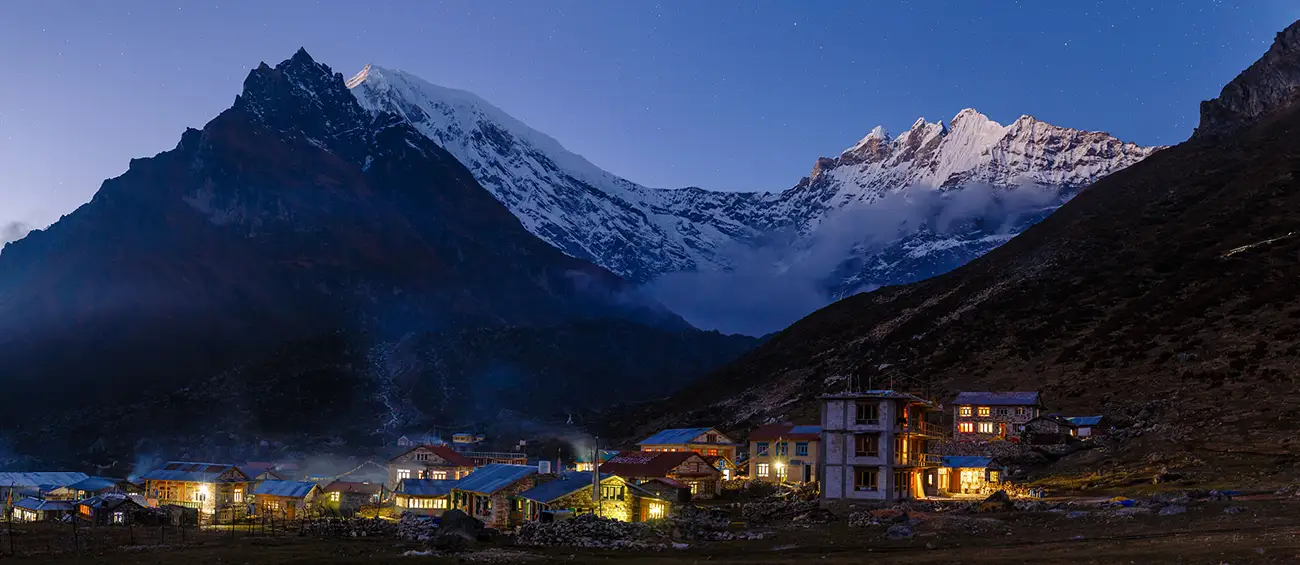
Trekking to Kyanjin Gompa Langtang: A Guide for Adventurers
Trekking to Kyanjin Gompa Langtang is a memorable experience for adventurers and nature lovers. The trek begins in Syabrubesi and weaves through lush forests and picturesque villages, showcasing the natural beauty of the Langtang Valley. Along the route, trekkers pass through well-known villages like Lama Hotel and Ghodatabela, each offering a unique blend of cultural and natural experiences.
Trek Route to Kyanjin Gompa
- Starting Point—Syabrubesi: The trek to Kyanjin Gompa begins in Syabrubesi, a small town about 122 kilometers from Kathmandu. As the gateway to the Langtang region, trekkers often spend the night there to prepare for the trail ahead.
- Lama Hotel: Once trekkers leave Syabrubesi, they will go to the Lama Hotel. This path leads through dense forests of oak, maple, and rhododendrons. There are also chances for people to trek here to enjoy the serene environment and see some animals like langurs, red pandas, and birds.
- Ghodatabela: The trek continues to Ghodatabela, a serene village surrounded by greenery. At around 3,000 meters, the altitude starts to become more noticeable. The landscape opens up, offering trekkers stunning views of snow-capped peaks. Ghodatabela is an ideal location to rest and acclimatize before continuing to higher elevations.
- Arrival at Kyanjin Gompa: After several days of trekking, trekkers reach Kyanjin Gompa at 3,870 meters. This spiritual retreat, nestled among towering Himalayan peaks, provides a peaceful space for reflection. Many trekkers use this as a base to explore nearby areas, including hikes to the Kyanjin Gompa Viewpoint or visits to surrounding glaciers.
Flora, Fauna, and Cultural Encounters Along the Trek
The Kyanjin Gompa Langtang trek takes trekkers through a diverse environment rich with unique flora and fauna. As trekkers pass through the forests, they are greeted by the vibrant blooms of rhododendrons in the spring, transforming the trail into a colorful red, pink, and white sea. Wildlife like the elusive red panda, Himalayan tahr, and various bird species make the trek even more exciting.
Beyond nature, the trek also offers rich cultural experiences. The Tamang people living in the Langtang Valley display their Tibetan-influenced culture through their monasteries, prayer flags, and stone houses. Trekkers can learn about local customs, enjoy traditional meals, and experience the hospitality of their communities. Visiting Kyanjin Gompa adds a spiritual dimension to the trek, as the monastery holds significant religious importance to the local Buddhist population.
Unique Aspects of the Langtang Valley Trek
Among Nepal’s trekking routes, Langtang Valley Trek epitomizes outstanding natural beauty and deep cultural integration. In contrast with some of Nepal’s more popular hikes, like Everest Base Camp Trek or Annapurna Circuit, which are pretty boisterous, the Langtang area offers a quieter trek high on authenticity. It has less crowded trails, providing trekkers an avenue to connect with their natural environment and the residents’ way of life.
Cultural and Spiritual Importance of Kyanjin Gompa Langtang
Kyanjin Gompa Langtang plays a pivotal role in the spiritual and cultural life of the Langtang Valley. Its position as a center for Buddhist practice, meditation, and community life makes it a must-visit for those looking to experience the region’s profound spiritual traditions. Visitors to the gompa can witness religious ceremonies, interact with the local Tamang people, and experience the Tibetan Buddhist way of life.
Role of Kyanjin Gompa as a Center of Buddhist Practice and Meditation
- Buddhist Monastic Center: Kyanjin Gompa is a hub for Buddhist monks and devotees in the Langtang Valley. Monks follow their daily rituals, prayers, and teachings, which visitors can witness and experience. The calm environment, amplified by the high altitude of Kyanjin Gompa, offers an ideal location for meditation and spiritual reflection.
- Meditation Retreat: The serene atmosphere surrounding the monastery makes it a perfect destination for meditation. Many trekkers take the opportunity to pause at the gompa and engage in meditation, tapping into the peace and tranquility that the altitude and natural setting provide. Monks and visitors often sit in quiet contemplation, creating a spiritual energy that permeates the entire area.
Festivals, Ceremonies, and Rituals at Kyanjin Gompa
- Losar Festival (Tibetan New Year): One of the most significant events at Kyanjin Gompa Langtang is the Losar festival, which marks the Tibetan New Year. The monastery becomes the center of vibrant celebrations, with the local community gathering for prayers, rituals, and offerings. Visitors can observe and, in some cases, respectfully participate in these spiritual ceremonies.
- Daily Pujas: The monastery holds daily pujas (prayer sessions), which are central to Tibetan Buddhist practice. These ceremonies involve chanting, prayers, and offerings to the deities, creating a deeply spiritual atmosphere. Visitors to Kyanjin Gompa can witness these rituals and gain insight into the monks’ and locals’ daily religious practices.
- Participation and Observation: While the festivals and rituals are deeply spiritual, visitors are often welcome to observe and, when appropriate, participate. This practice includes offering prayers, lighting butter lamps, or simply sitting in quiet meditation during the ceremonies. Respect for the traditions and rituals is critical, as the gompa remains an active center for Buddhist devotion.
Interaction with the Tamang People and the Influence of Tibetan Buddhism
- Tamang Community and Daily Life: The Tamang people, who have lived in the Langtang region for centuries, are deeply connected to Kyanjin Gompa Langtang. Their way of life revolves around Tibetan Buddhism, which influences everything from architecture to daily practices. The Tamang culture is warm and welcoming, and visitors often have the chance to engage with locals, learn about their traditions, and share their customs.
- Influence of Tibetan Buddhism: Tibetan Buddhism shapes the spiritual and cultural landscape of the Langtang Valley. Prayer flags flutter across the valley, and chortens (Buddhist shrines) dot the trail as trekkers go to the gompa. The teachings of Tibetan Buddhism influence not just the spiritual practices at Kyanjin Gompa Langtang but also the way the Tamang people interact with the land, nature, and their community.
- Cultural Immersion: Visiting the Gompa offers trekkers a chance to experience the region’s spiritual and cultural life. Whether they learn about the significance of the Kyanjin Gompa Altitude, enjoy the breathtaking views from this Viewpoint, or witness the daily rituals of the Tamang people, the experience is profoundly enriching.
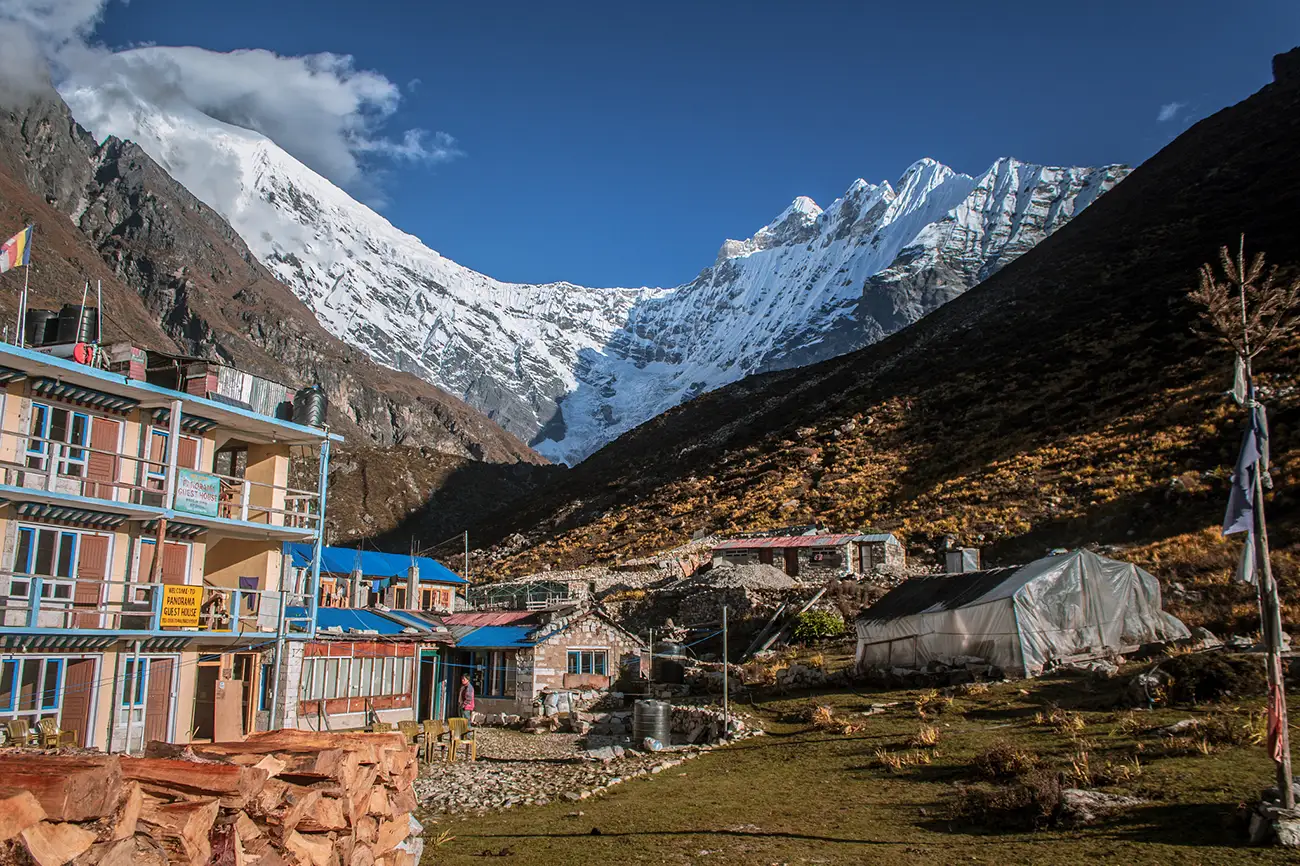
Local Attractions and Activities Around Kyanjin Gompa Langtang
Kyanjin Gompa Langtang offers trekkers a rich blend of spiritual, cultural, and outdoor experiences. The surrounding area is a natural wonderland, ideal for exploring wildlife, glaciers, and scenic hiking trails. Visitors can enjoy exciting activities like wildlife spotting, hiking to glaciers, and visiting nearby peaks such as Tserko Ri. Here are some top activities to consider around Kyanjin Gompa Langtang.
Tour the Kyanjin Cheese Factory
- Traditional Yak Cheese Production: The Kyanjin Cheese Factory is a unique attraction in Kyanjin Gompa Langtang. Established with Swiss support in the 1950s, this small factory specializes in producing fresh yak cheese. Visitors can tour the facility, watch the yak cheese-making process, and taste this local delicacy, which many trekkers consider a highlight.
- Learning About Local Livelihoods: The cheese factory is an excellent place to understand the economy of one’s region. People who live in the Langtang area depend on yak farming for a big chunk of their sustenance. This establishment offers educational tours that allow visitors to gain insight into sustainable methods used in farming at high altitudes.
Explore the Nearby Glaciers
- Langtang Glacier: A short hike from Kyanjin Gompa Langtang brings you to the stunning Langtang Glacier. This massive glacier allows trekkers to experience the icy beauty of the Himalayas up close. The trail to the glacier is moderately challenging but rewards hikers with incredible views of the surrounding peaks and the glacier.
- Lirung Glacier: Another glacier worth visiting is the Lirung Glacier. The hike to Lirung Glacier passes through scenic alpine meadows and rocky paths, offering panoramic views of Langtang Lirung, one of the region’s most iconic peaks.
- Safety Precautions: Glaciers at this altitude present challenges due to icy terrain and unpredictable Kyanjin Gompa Weather, so trekkers should prepare for cold conditions. Acclimatization to the high altitude at Kyanjin Gompa is necessary before attempting these hikes to avoid altitude sickness.
Hike to Tserko Ri
- Tserko Ri Summit: One of the most popular day hikes from Kyanjin Gompa Langtang is the trek to Tserko Ri, which rises to approximately 4,984 meters. This challenging hike rewards trekkers with breathtaking views from the summit, including panoramic vistas of Langtang Lirung, Langshisha Ri, and other Himalayan giants.
- Incredible Scenery: The views from Tserko Ri are often considered the best in the Langtang region. Experts advise trekkers to start early in the morning to catch the sunrise and enjoy clear skies before the weather shifts. Hikers can spot glaciers from the summit and gaze at the expansive Langtang Valley.
- Acclimatization Tips: Since Tserko Ri is at a higher altitude than Kyanjin Gompa, trekkers must properly acclimatize before tackling the hike. Preparing well will help prevent altitude sickness and ensure a more enjoyable experience.
Wildlife Spotting and Himalayan Species
- Diverse Wildlife: The area around Kyanjin Gompa Langtang is home to various Himalayan wildlife. Trekkers can spot rare species like the red panda, Himalayan tahr, and occasionally the elusive snow leopard. The surrounding forests and alpine meadows serve as natural habitats for these creatures.
- Birdwatching Opportunities: Bird lovers will appreciate the rich birdlife in the region, including sightings of the Himalayan monal (Nepal’s national bird), colorful pheasants, eagles, and vultures. The diverse bird species add to the unique wildlife experience.
- Best Time for Spotting Wildlife: Spring and autumn offer the best opportunities for wildlife spotting. The Kyanjin Gompa Weather is more temperate, and animals are more active during these seasons. Trekking to areas like the Kyanjin Gompa Viewpoint or exploring glacier trails will increase your chances of encountering these rare species.
Visit Local Villages and Experience Tamang Culture
- Engage with Tamang Culture: Visitors to the nearby villages, where they can experience the Tamang way of life, will be met with warm hospitality, as Tibetan Buddhism influences most aspects of their culture. The Tamang, influenced by Tibetan Buddhism, are known for their hospitality and friendliness. By interacting with locals, trying traditional foods, and learning about crafts passed down from generation to generation, one can gather information about their traditional practices and everyday existence.
- Explore Monasteries and Prayer Wheels: As you trek through Kyanjin Gompa Langtang, you will encounter smaller monasteries and prayer wheels integral to the valley’s spiritual life. These religious landmarks provide peaceful resting points along the trek, allowing visitors to reflect on the region’s spiritual significance.
Practical Information for Visitors to Kyanjin Gompa Langtang
Planning a trek to Kyanjin Gompa Langtang requires careful preparation, from understanding the route and accommodations to knowing the necessary permits. Located at a significant Kyanjin Gompa Altitude of 3,870 meters, this destination offers a combination of cultural, spiritual, and natural beauty. Here’s essential information to help you plan your visit.
How to Reach Kyanjin Gompa Langtang
- Starting Point (Syabrubesi): The trek to Kyanjin Gompa Langtang begins in Syabrubesi, about 122 kilometers from Kathmandu. You can take a bus or hire a private jeep from Kathmandu to Syabrubesi. The bus ride typically takes 7-9 hours, depending on road conditions, and offers scenic views. Though private transport is faster and more comfortable, it is usually more expensive.
- Trekking Duration: A trek from Syabrubesi to Kyanjin Gompa typically takes four to six days, depending on your pace and acclimatization ability. Before reaching the prominence of Kyanjin Gompa Altitude, you will encounter beautiful homes such as Lama Hotel and Ghodatabela. Typically, trekkers make this round trip in seven to eight days, including days spent acclimatizing and side trips to places like Kyanjin Gompa Viewpoint.
- Transportation Options: Once you arrive in Syabrubesi, you’ll continue the trek to Kyanjin Gompa Langtang on foot, as there are no motorable roads beyond this point. Hiring a guide or porter can help manage the trek, particularly for those unfamiliar with high-altitude trekking.
Accommodation Options in Kyanjin Gompa
- Teahouses and Lodges: Several teahouses and lodges in Kyanjin Gompa Langtang offer basic yet comfortable accommodations. Rooms typically include a bed, blanket, and shared bathroom facilities. These lodges also serve meals with popular dishes like dal bhat and momo. The services are affordable and welcoming, although prices vary depending on the season.
- Availability of Rooms: It’s wise to book accommodations ahead during peak trekking seasons (spring and autumn) or arrive early to secure a room. Due to the popularity of this Viewpoint, lodgings can fill up quickly, especially during these busy times.
Gear, Permits, and Guides
- Necessary Gear: Given the high Kyanjin Gompa Altitude, you must pack the right gear for this trek. The weather can change rapidly, so you’ll need layers, including a down jacket, thermal clothing, and waterproof outerwear. Sturdy trekking boots, poles, gloves, and a warm hat are essential for dealing with uneven terrain and cold conditions. Be sure to carry a sleeping bag as temperatures drop, particularly during the off-season.
- Permits Required: To trek to Kyanjin Gompa, you’ll need a TIMS (Trekkers’ Information Management System) card and a Langtang National Park Entry Permit. You can acquire these permits in Kathmandu from the Nepal Tourism Board office or through a trekking agency. Be sure to carry them throughout the trek, as checkpoints may require you to show them.
- Hiring Guides and Porters: Although the trail to Kyanjin Gompa Langtang is well-marked, hiring a guide can improve your experience by offering insights into local history, culture, and nature. Consider hiring porters to carry your luggage, making the trek more comfortable and enjoyable. Hiring a guide or porter is affordable, and they can help you navigate the trail, deal with changes in Kyanjin Gompa Weather, and choose the best paths to popular spots like the Kyanjin Gompa Viewpoint.
Conclusion: The Significance of Kyanjin Gompa Langtang
Kyanjin Gompa Langtang offers an exceptional experience for both trekkers and spiritual seekers. Situated at an impressive 3,870-meter Altitude, it combines stunning natural beauty, rich cultural heritage, and challenging trekking routes. This unique destination draws visitors from around the globe, offering a peaceful Buddhist retreat and breathtaking views of snow-covered peaks and lush valleys in the Langtang region.
Gompa is a place that trekkers can visit along some of the beautiful and scenic trails, and it rewards them with a fantastic hike to Kyanjin Gompa Viewpoint, where one can have a panoramic view of the Himalayan range. This trek offers more than just trekking; it also provides a more profound experience enriched by the cultural heritage of the local Tamang community, whose roots lie in Tibetan Buddhism. Tourists should always consider Kyanjin Gompa’s weather since the weather patterns may change quickly because of the mountain’s height.
Kyanjin Gompa Langtang in Nepal is a hidden gem that combines breathtaking nature, rich culture, and thrilling adventures. Whether you’re looking for a peaceful retreat in the monastery or an exhilarating climb, this place has something for everyone.

